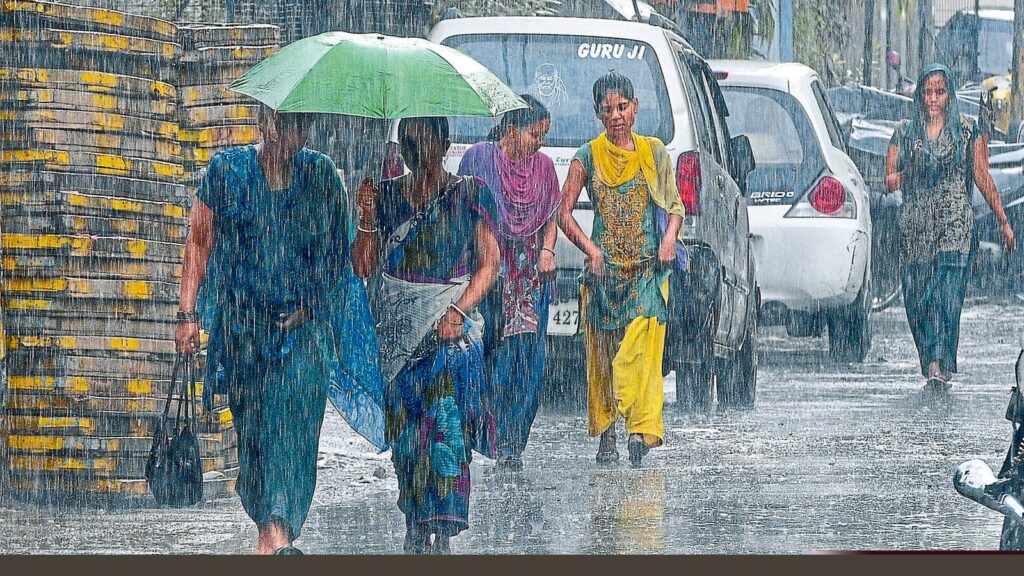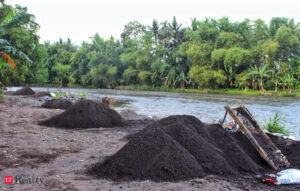Wetter monsoon slows transmission line addition in FY25

New Delhi: India’s addition of new power transmission lines fell by half over a year earlier in the April-October period as a wetter-than-usual monsoon slowed work.
The country added 4,762 circuit kilometres (ckm) of transmission lines during the first seven months of the current fiscal, about 47% lower than 7,026 ckm in the year-ago period, according to data from the Central Electricity Authority (CEA).
About 1,240 ckm have been added by central sector companies, with states adding the most at 2,710 ckm and private companies contributing 812 ckm, the data showed. The capacity added in the first seven months is just about a third of the target of 15,253 ckm for the ongoing fiscal ending March 2025.
A strong transmission network with adequate storage capacity is crucial for stabilizing power supply, more so with increasing renewable energy capacity in the country. Plans to connect the Indian grid with the national transmission networks of the UAE, Saudi Arabia, Sri Lanka and Singapore under the One Sun One World One Grid initiative would also require a strong domestic network.
“The transmission line addition may have been constrained due to higher rains this year during the monsoon season,” said Vikram V., vice-president and co-group head, corporate ratings, Icra. “However, the execution is expected to pick up during the remaining period of the year, as was witnessed during the same period last fiscal. About 7,000 ckm lines were added during the November-March period of last fiscal.”
Queries emailed to the union ministry of power remained unanswered till press time.
In the last financial year (FY24), a total of 14,203 ckm of transmission lines were added against the target of 16,682 ckm.
Although monsoon rainfall in June saw a deficit of 10.9% compared with the long-period average between 1971 and 2020, the subsequent months of July, August and September were wetter, with 9%, 15.3% and 12.5% excess rain, respectively. And while the monsoon officially came to an end on 1 October with around 8% excess rainfall on an average, rains continued in several parts of the country.
Of the 15,253 ckm targeted in FY25, central sector companies are scheduled to develop 5,413 ckm, while private companies would install 1,586 ckm and states would contribute the largest chunk of 8,254 ckm.
In October, a total of 12 transmission lines with a cumulative length of 1,454 ckm were commissioned or were ready for commissioning compared with 1,820 ckm in October 2023.
However, the addition of transformation capacity gained momentum this fiscal with 33,265 mega volt ampere (MVA) being added against 29,521 MVA a year earlier. Transformation capacity refers to the total capacity of transformers installed in a transmission system, enabling it to ensure smooth and stable flow of handle-voltage power.
Both transmission lines and transformation capacity are key for the country to achieve 500 gigawatt (GW) of non-fossil fuel power capacity by 2030.
A cumulative investment of ₹9.15 trillion would be required in the transmission sector to achieve the 500 GW clean energy capacity and to also add the required storage capacity to ensure non-intermittent power supply, according to the National Electricity Plan for transmission released by the CEA last month.
The plan entails integration of 10 GW of offshore wind capacity, 47 GW of battery energy storage systems, and 30 GW of pumped storage plants. It also includes plans to cater to the needs of green hydrogen and green ammonia–produced with renewable energy–manufacturing hubs along with cross-border interconnections of transmission networks. A transmission system has also been planned for delivering power to green hydrogen and green ammonia hubs at coastal locations like Mundra, Kandla, Gopalpur, Paradeep, Tuticorin, Vizag, and Mangalore.
Catch all the Industry News, Banking News and Updates on Live Mint. Download The Mint News App to get Daily Market Updates.
MoreLess








